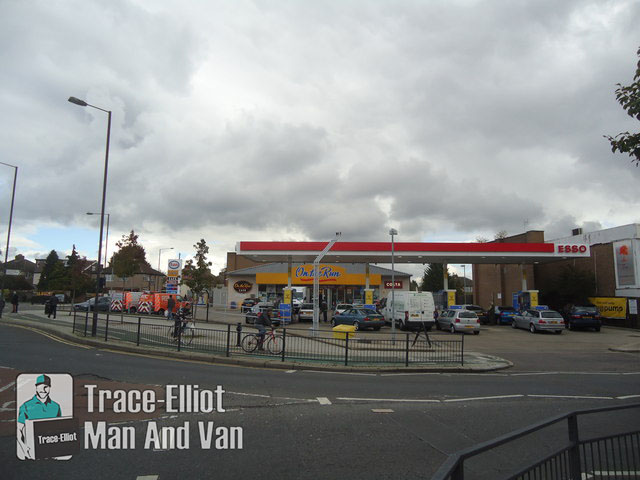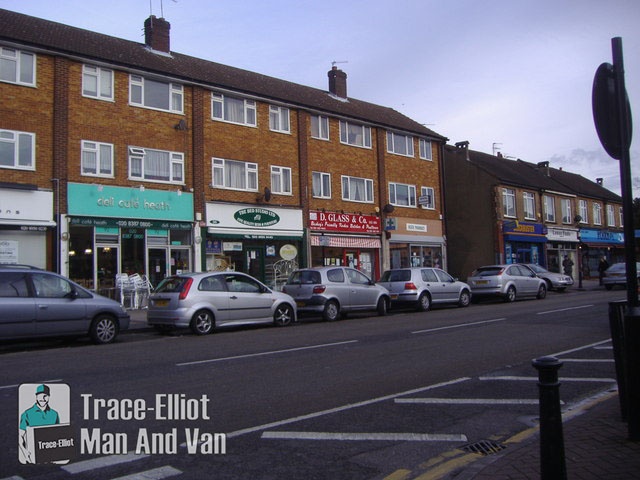Similar to most boroughs in North Western London Harrow was also part of Middlesex. Harrow has been a London borough for over 60 years so far and its 50th anniversary was in fact visited by Her Majesty Queen Elizabeth II. Contemporary art has its foundation in the area as in 2010 the first contemporary gallery was opened. The Usurp Art Collective is behind this project. Interestingly enough about 64% of the population there is not white. There are mainly representatives of the Indian ethnicity. When it comes to education Harrow has its own college. Surely enough it is called Harrow College. It is a relatively new institution as it opened its gates in 1999. Students go to study there from all over UK and moving can be quite challenging. This is why Harrow custom student man and van jobs are very popular. Harrow is still considered an affluent area of London and it has been like that for almost a century. Unfortunately poverty rates are increasing. In this article we will take a look at some of the more popular districts of the London Borough of Harrow and will point out some of their landmarks and more notable places.
 We now know where the name of Belmont comes from but the connection between what gave it the name and the origin of the actual name is unclear. It is believed that Belmont, HA3 was named after a mound. This mound was constructed by Henry James Brydges during the 18th century. This person was the Duke of Chandos. As you can see the name Belmont is not mentioned under any form except for the obvious connection between the words “mount” and “mont”. Nowadays HA7 is a suburban district without any significant landmarks. Belmont Circle is the local central and retail area. The local pub is now called ‘Funky B. Belmont Community Hall is known for conducting an annual jumble sale.
We now know where the name of Belmont comes from but the connection between what gave it the name and the origin of the actual name is unclear. It is believed that Belmont, HA3 was named after a mound. This mound was constructed by Henry James Brydges during the 18th century. This person was the Duke of Chandos. As you can see the name Belmont is not mentioned under any form except for the obvious connection between the words “mount” and “mont”. Nowadays HA7 is a suburban district without any significant landmarks. Belmont Circle is the local central and retail area. The local pub is now called ‘Funky B. Belmont Community Hall is known for conducting an annual jumble sale.
The town that shares the borough’s name has a few interesting things to show us
Harrow is not only as borough of London but also a suburb in the same borough. The fact that it also has a conservation area goes to show you that it is not exactly very central. Charing Cross is about 10.5 miles away. However it does have some history as a number of buildings date back to the 17th century. The name derives from the old English language and means “temple”. It is believed that the actual temple really existed on a nearby hill. Today there lies St. Mary’s Church. As mentioned above the first contemporary art gallery is located in the Borough of Harrow, HA1. Well now we know that it is in fact in the town itself. These pieces are delicate and require great attention when moving. Professional man and can companies in Harrow are typically engaged for the delivery of such fragile art pieces.
Harrow on the Hill, HA1 is really not a large area. Actually it is indeed located on a hill – one that is 408 feet tall. Interestingly enough the history of this place can be traced all the way back to the year 767. Back then it was referred to as Gumeninga. The name used to sound very familiar in 1398 – Harrowe atte Hille. There is a curious story about King Charles I stopping at Harrow on the Hill to water his horses thus giving the local stream the name “King Charles’ Well”.
 The most interesting part about Harrow Weald is in fact the second part of that name. The world “weald” originates from Old English and basically stands for “woodland”. Certainly this name went through a lot of changes during Medieval times and the first records of the current name of Harrow Weald date back to the 16th century. People have the opportunity of visiting Bushey Heath and Wealdstone. There is also a suburban area with residential districts and schools. Even though the area looks distant it indeed has a need for top class man and van companies with all the urban development going on.
The most interesting part about Harrow Weald is in fact the second part of that name. The world “weald” originates from Old English and basically stands for “woodland”. Certainly this name went through a lot of changes during Medieval times and the first records of the current name of Harrow Weald date back to the 16th century. People have the opportunity of visiting Bushey Heath and Wealdstone. There is also a suburban area with residential districts and schools. Even though the area looks distant it indeed has a need for top class man and van companies with all the urban development going on.
And at the end…
Hatch End is known for housing the Harrow Arts Centre. All sorts of cultural events are hosted there and there is a lot of moving going on. Sets, art pieces and musical instruments are constantly taken in and out and attentive man and van services in Hatch End are much appreciated by the locals.
